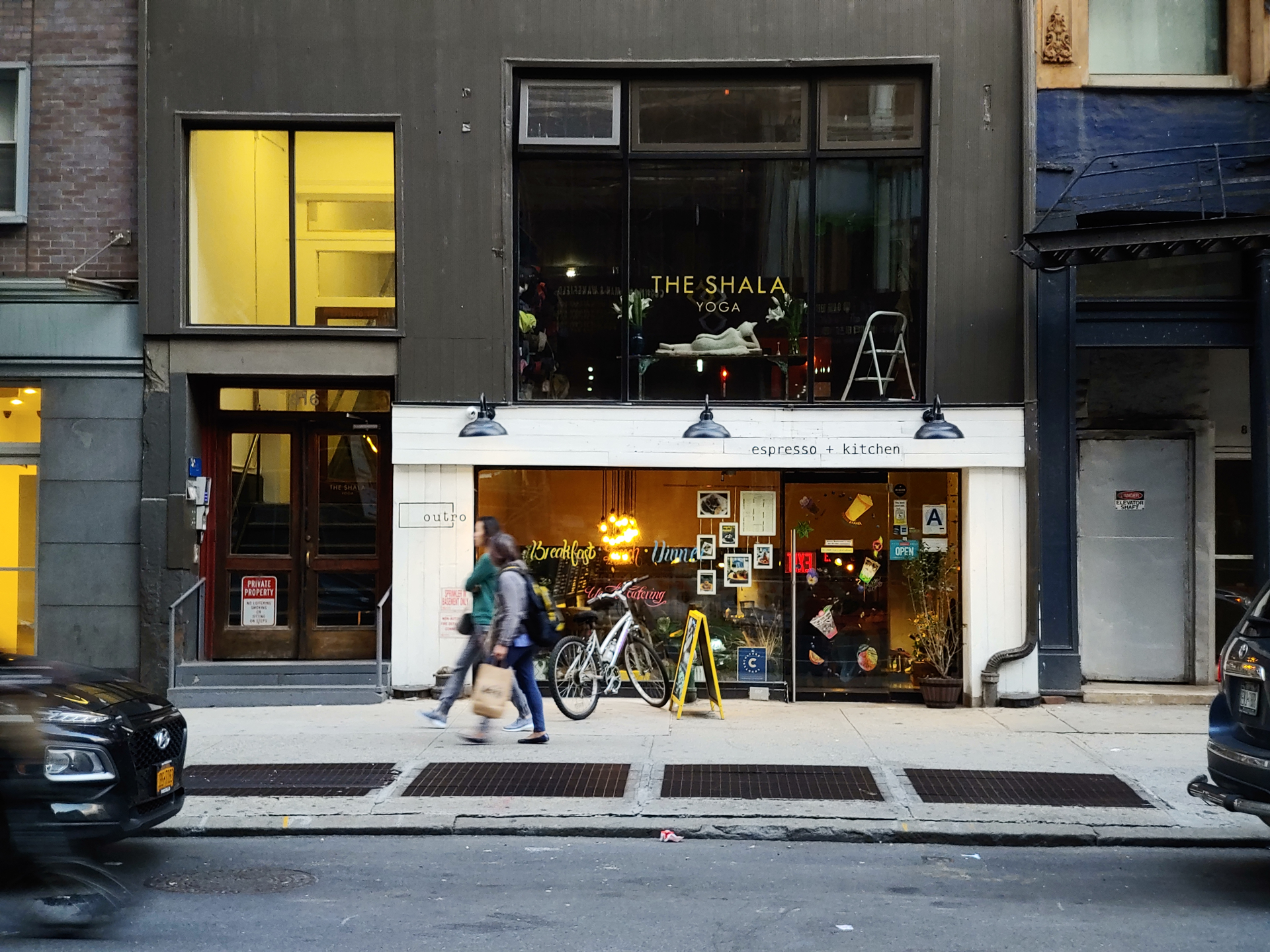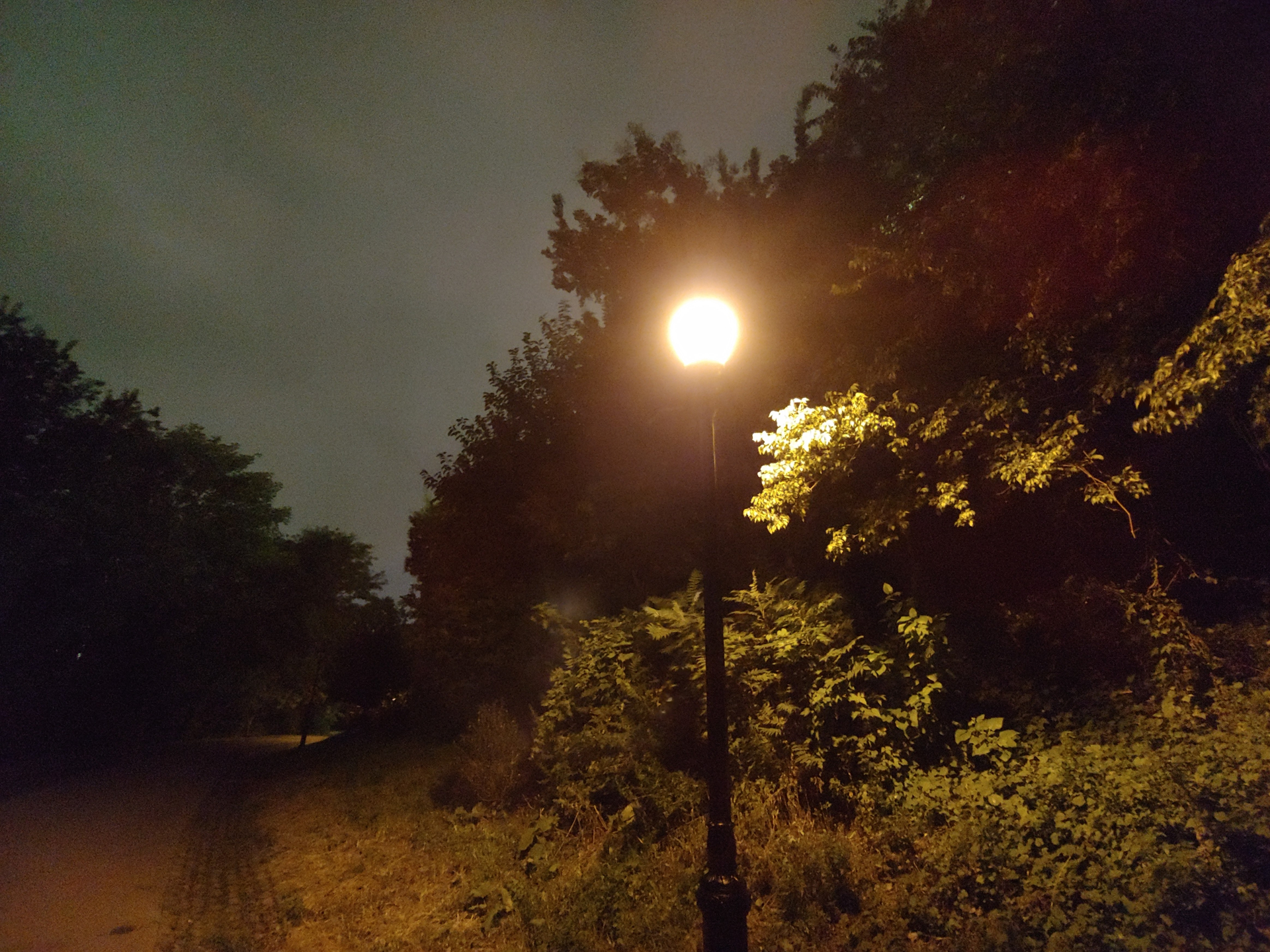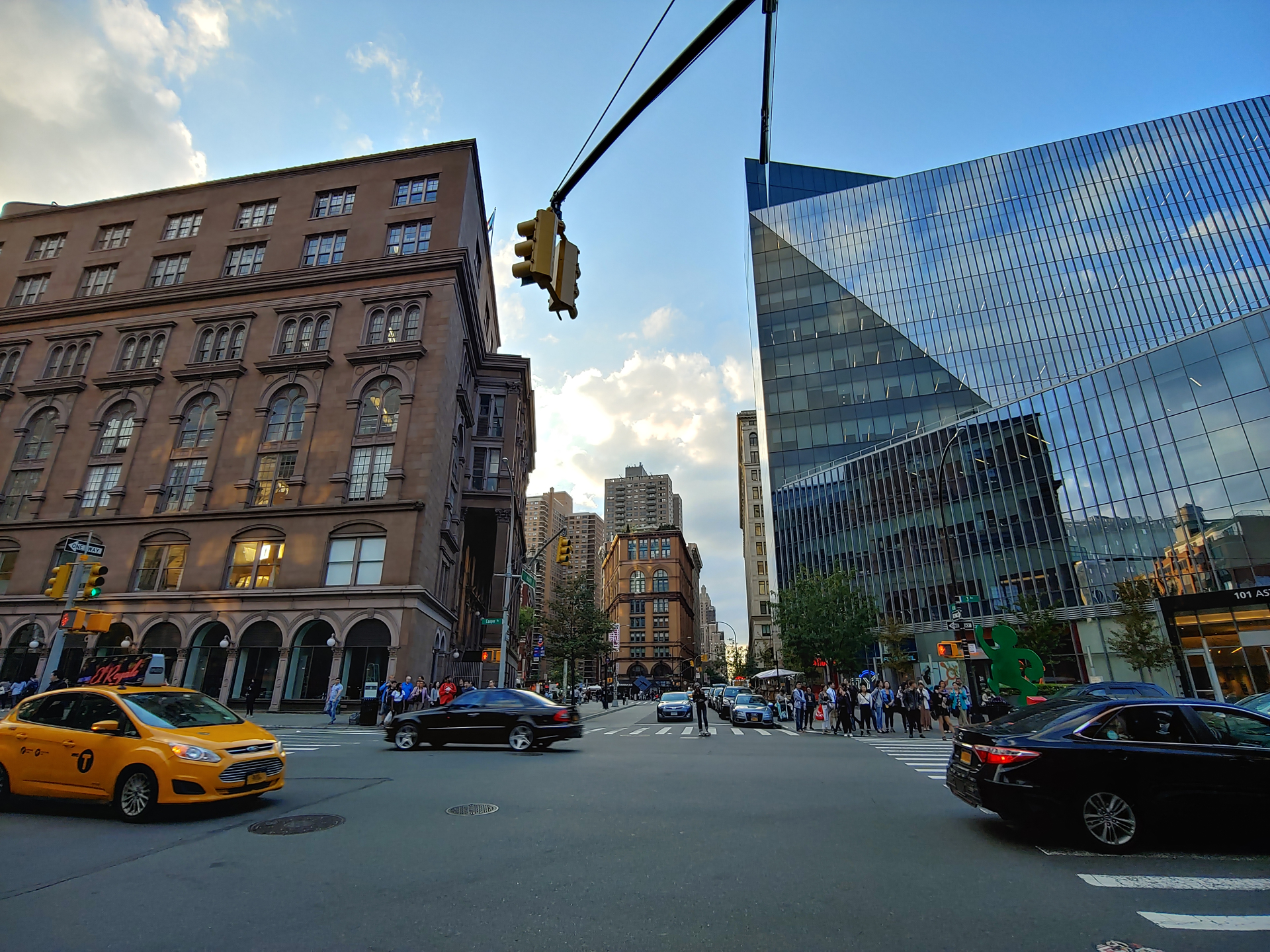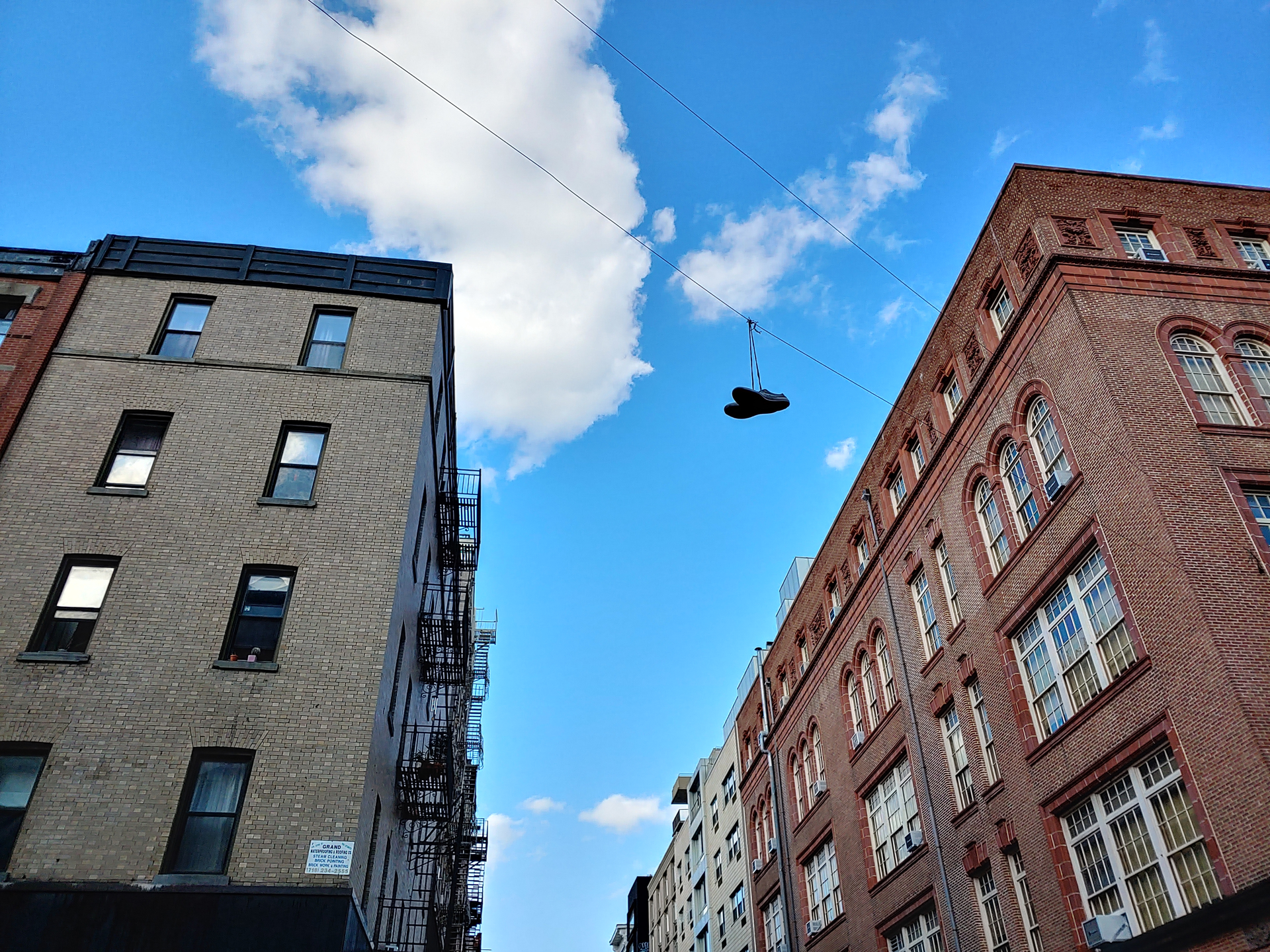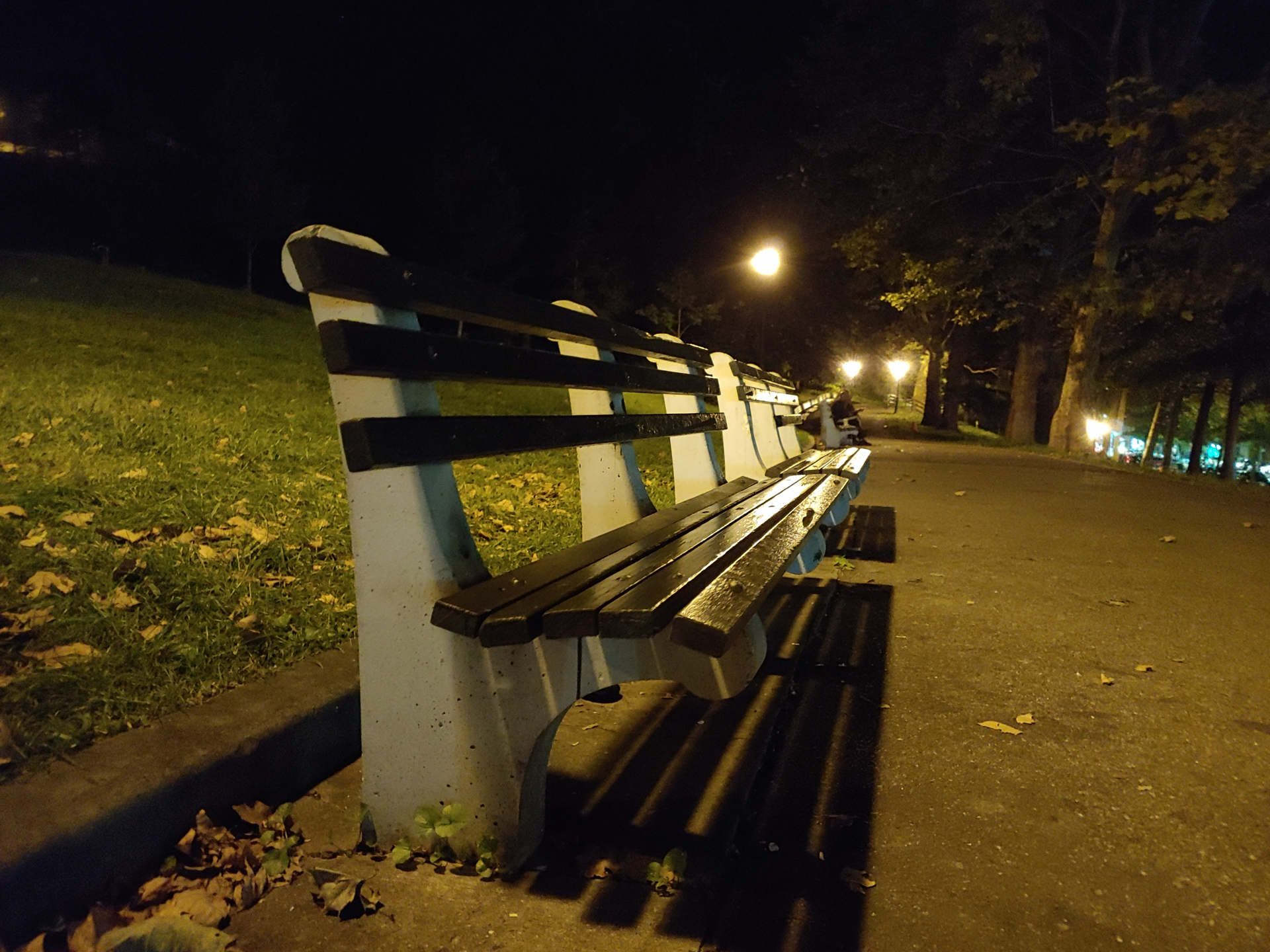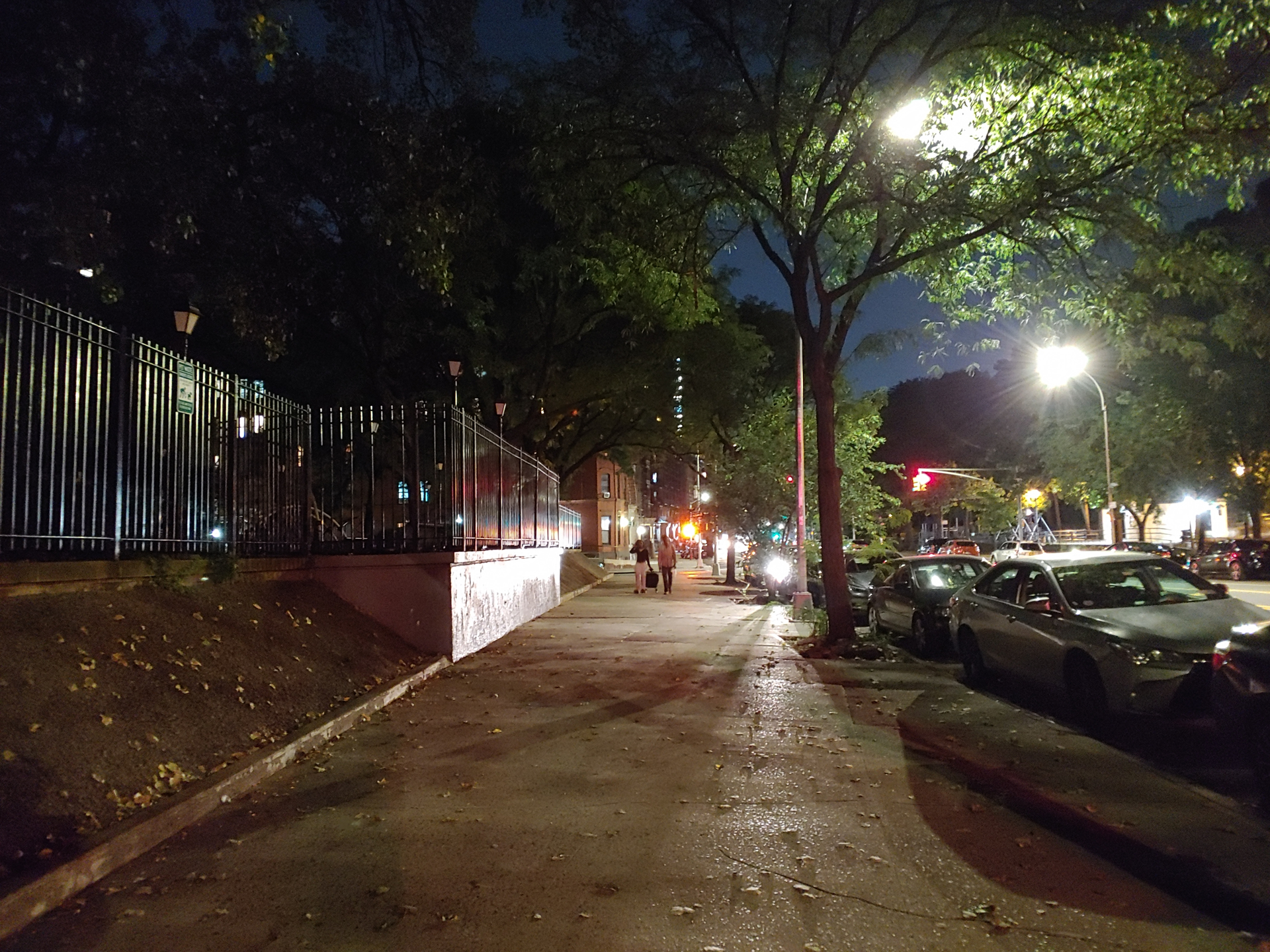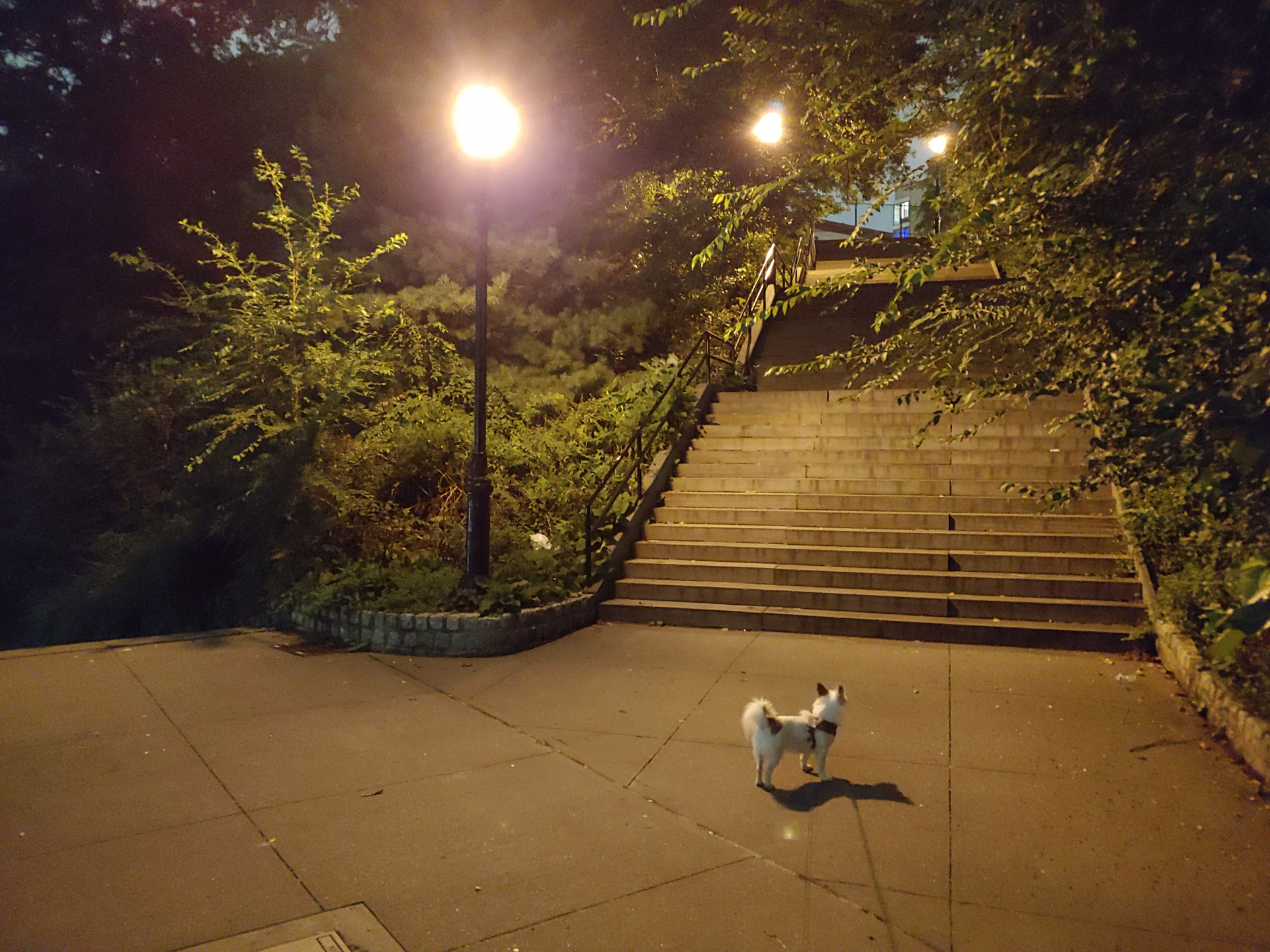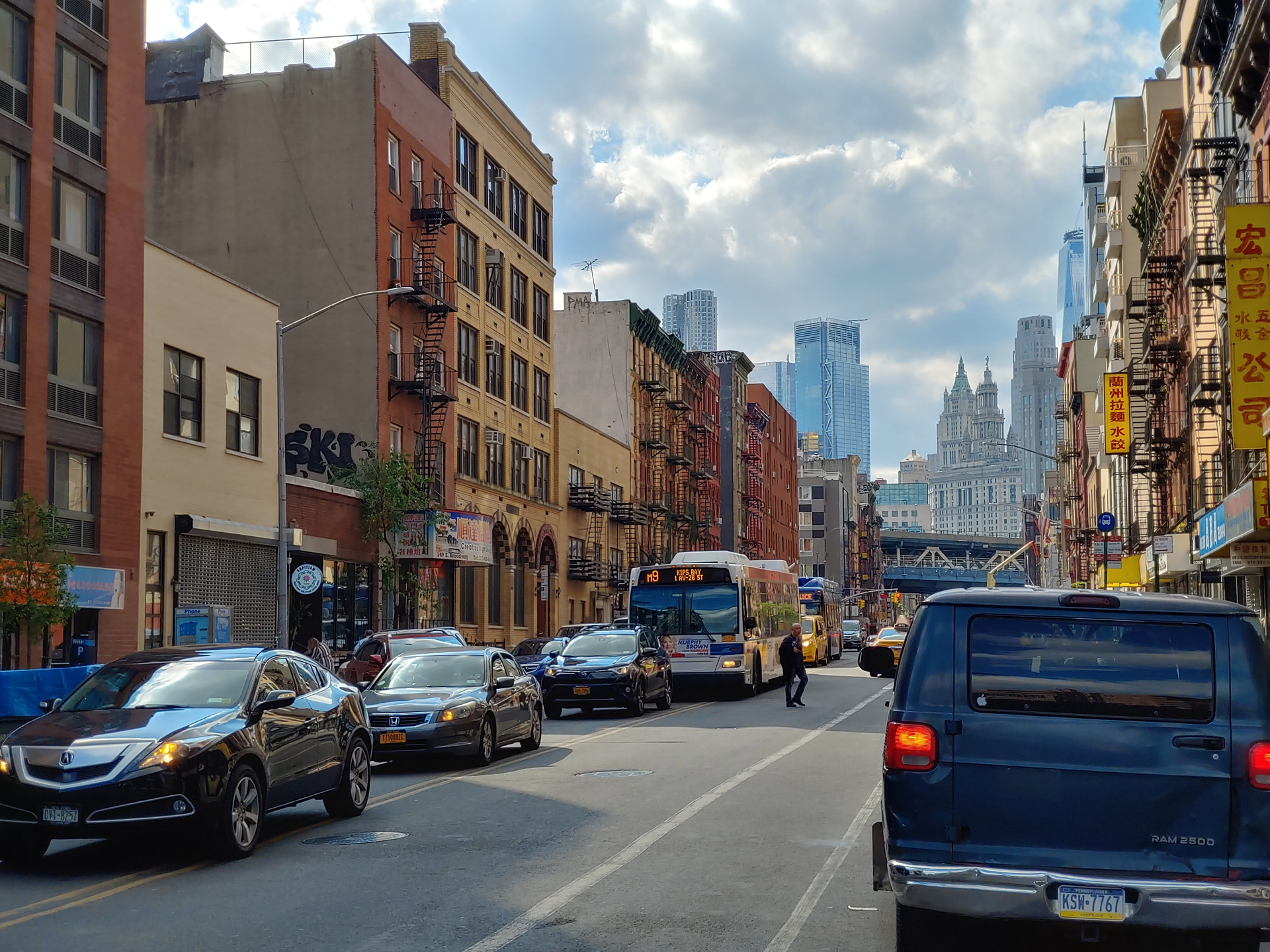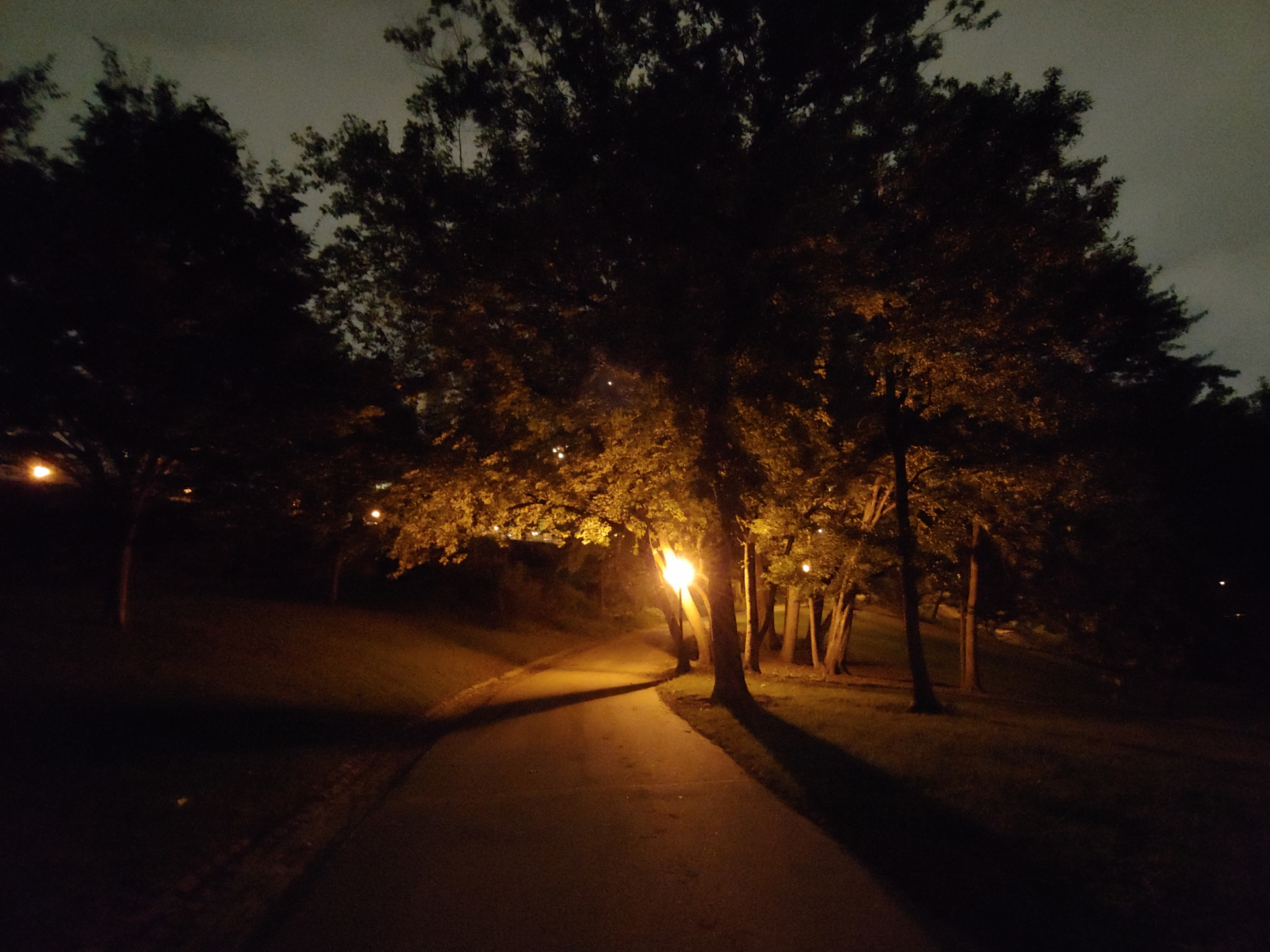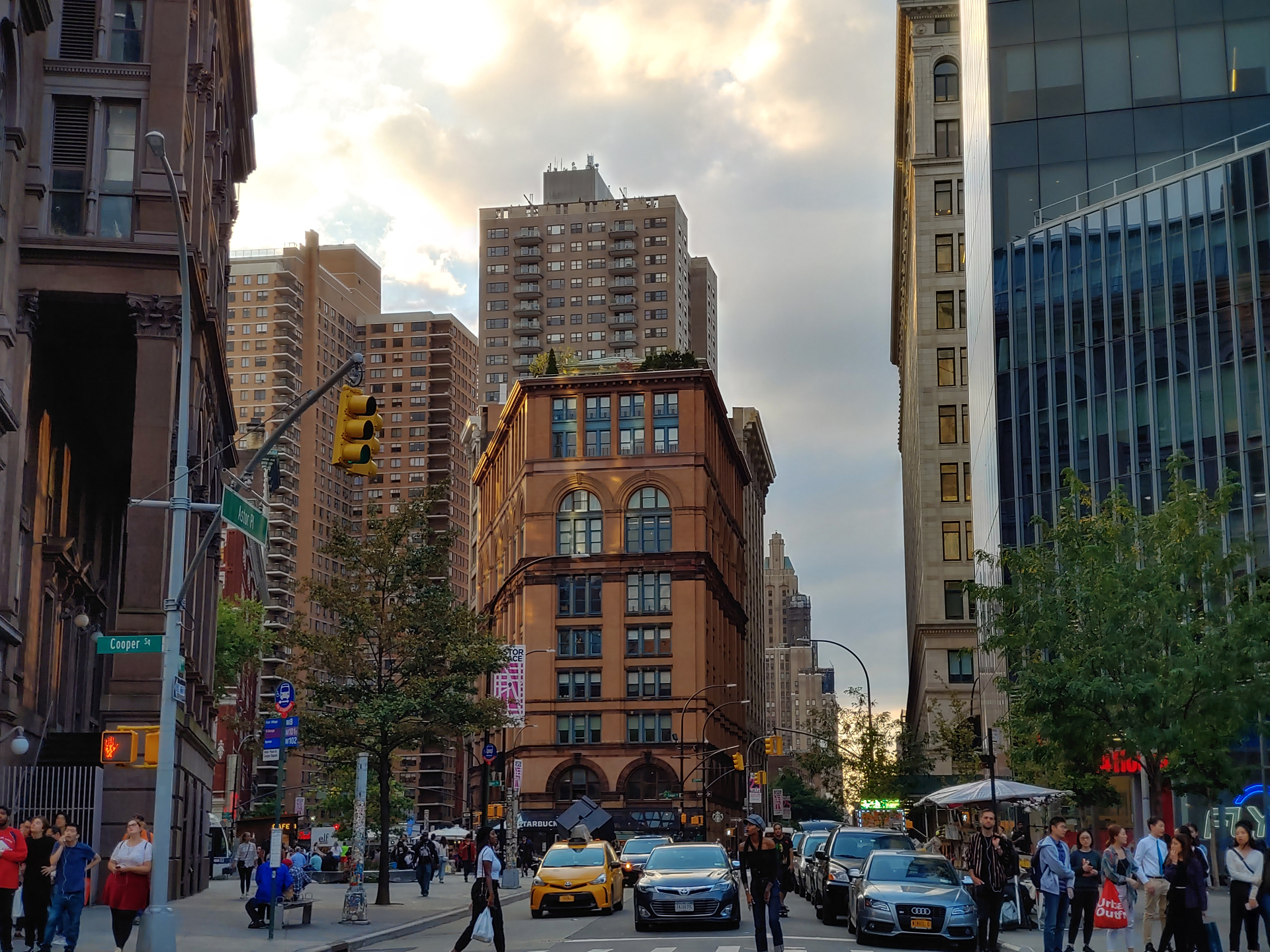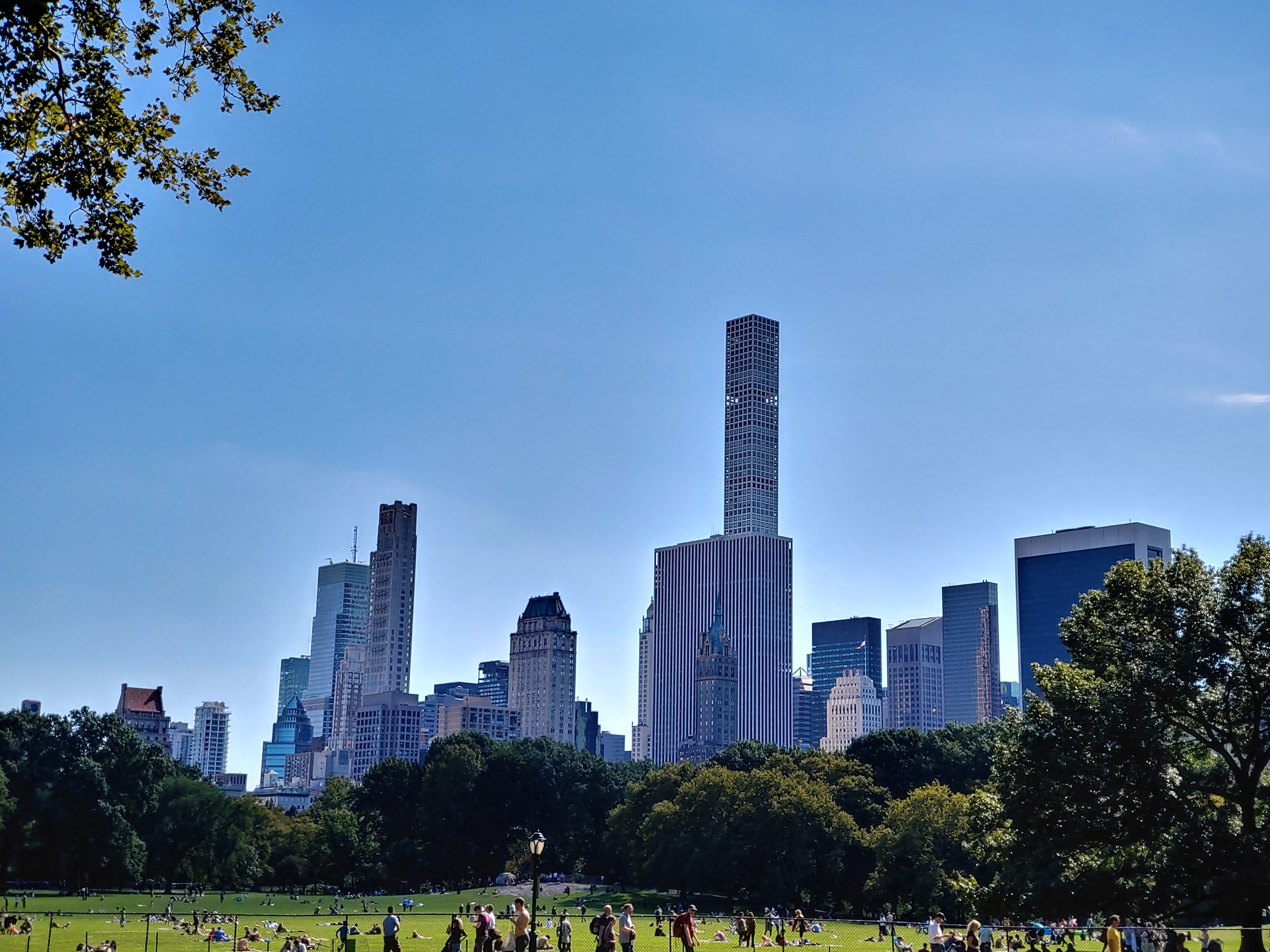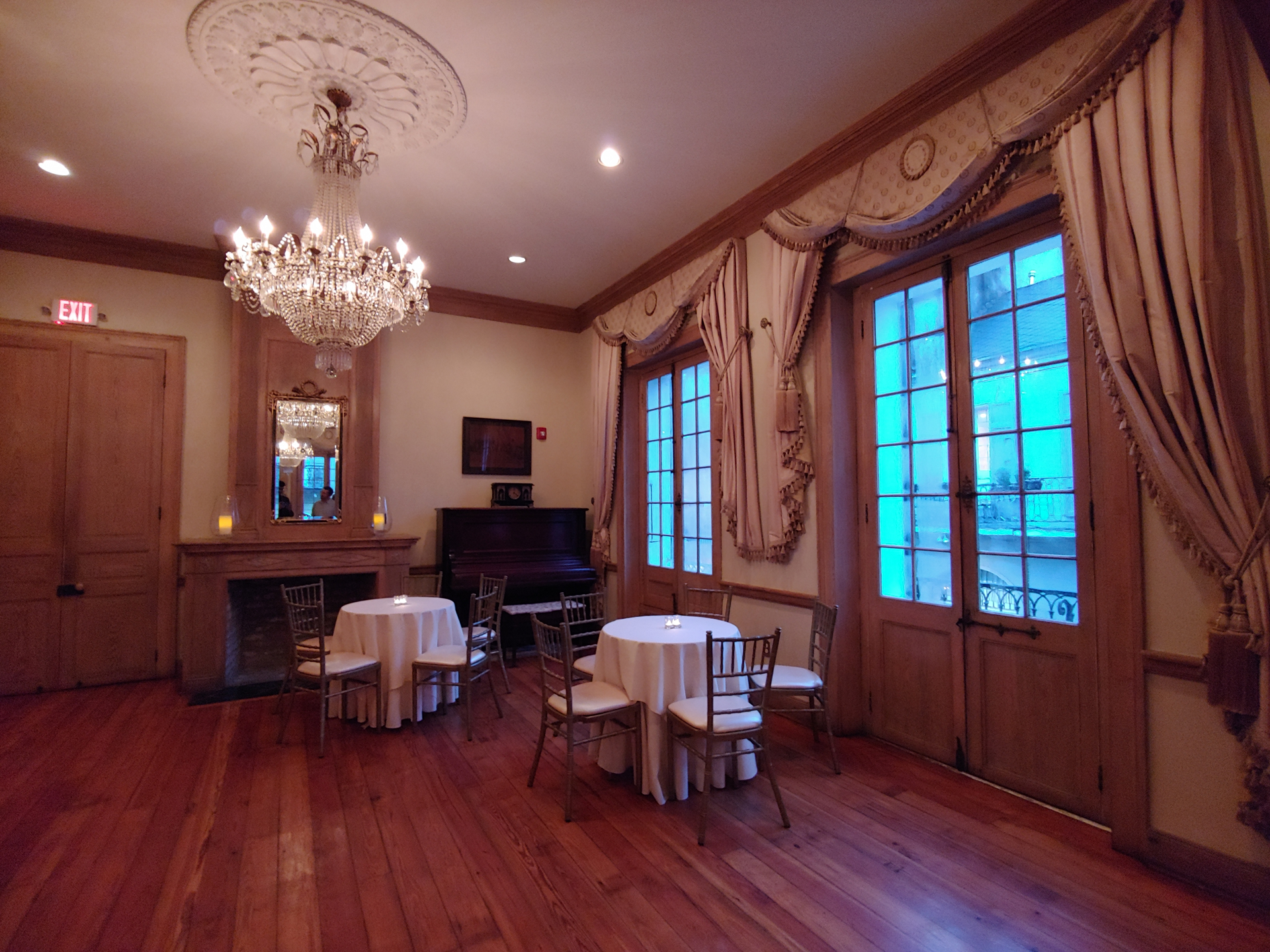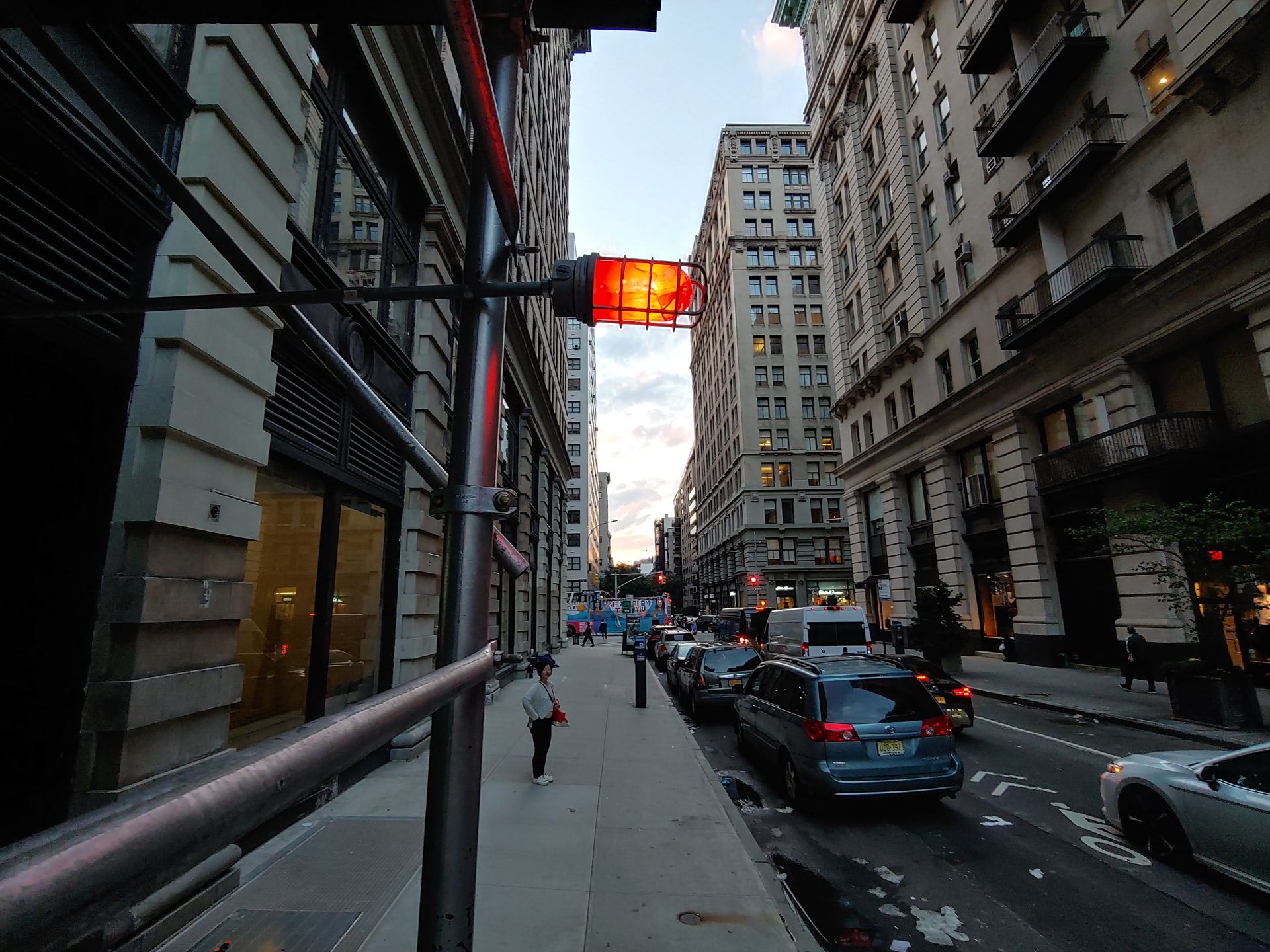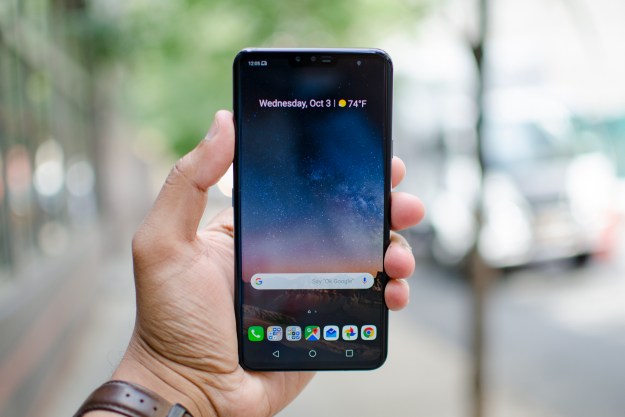
“Five isn’t too much. The LG V40 ThinQ delivers a creatively fun camera system.”
- Good OLED screen
- Day-long battery life
- Speedy performance
- Versatile camera system
- Hi-res audio, great Boombox speaker, headphone jack
- Expensive
- Some bloatware, no Android Pie
- Camera app can be slow, buggy
The V40 ThinQ is LG’s fourth flagship smartphone of the year, and LG has clearly refined on its predecessors to make it the best of the lot. Why? It shares a lot of similarities with the V30S ThinQ, the V35 ThinQ, and the LG G7 ThinQ, but it’s the camera on the V40 that sets it apart. There are two extra lenses, bringing the entire system to a total of five cameras for a kind of versatility you don’t often see on a smartphone. The drawbacks? The V40 costs $900, and at that price you should expect the level of polish you get from an iPhone XS.
Refined design, good OLED display
The V40 ThinQ is an amalgamation of last year’s LG V30 and the LG G7. From the back, it almost looks exactly like the V30 but with the addition of a third camera on the horizontal module. The indented fingerprint sensor below is fast to react, and it’s in an optimal position, but it no longer doubles as a power button which LG first changed in the G7. The back is clean and simple, though the glass easily picks up fingerprint smudges, and we do think LG could have played around more with color, as the New Aurora Black option is a little dull (Moroccan Blue is available in other regions).
The glass curves into the edges, making the V40 supremely comfortable to hold — you never feel anything rough. LG also prides itself on its ability to make the V40 incredibly light at just 5.96 ounces. As a reference, the smaller iPhone XS weighs 6.24 ounces. To us, that just makes the V40 feel slightly cheap. It’s so light to the point that we’re concerned about the phone’s ability to withstand a single drop. Still, we do like how narrow the phone feels thanks to its 19.5:9 aspect ratio.
The phones power button is now on the right side, with a volume rocker on the left and the A.I. Key from the G7 makes a return below. The A.I. Key lets you call upon Google Assistant, and it works incredibly well. We have accidentally pressed it, but we’ve actually enjoyed using to the point that we’ll stop short of calling it a problem (unlike the Bixby Key). If you don’t want to use Google Assistant, there’s a way to turn it off, but sadly that means it will remain a useless key on your phone as you can’t remap it. The headphone jack is at the bottom, next to a USB Type-C charging port and bottom-firing speaker.
The V40 feels good in hand and minimizes looks — it doesn’t try to make a statement with a flashy design or eye-catching colors.
The V40’s OLED screen is bigger than ever before at 6.4 inches, with a 3,120 x 1,440 resolution (536.92 pixels per inch). The larger size isn’t too unwieldy, though it can be tough to reach the top of the phone without shuffling it down in your hand. To increase the screen to body ratio, the V40 has a notch, which is sure to split opinion. We’d have liked for the contents in the notch to look a bit more symmetrical (the speaker is off to the right and the two front cameras to the left), but this is a minor qualm.
Having used phones with notches for a better part of the year, we’re not bothered by its presence here, but there’s also a tool in the settings that lets you mask it through software if you can’t stand it. There’s a small bezel on the bottom, also known as a chin, but it’s not too noticeable.
The screen supports HDR10, and it looks sharp and colorful. It’s not quite on the level of the screens from the iPhone XS or the Galaxy Note 9 — it doesn’t get as bright, which means you really need to crank the brightness to the max to see anything in direct sunlight, and LG also doesn’t let videos cut past the notch, so it doesn’t feel as expansive or immersive when watching a movie (you might like this if you hate the notch). What we love is the OLED’s inky blacks. Throw a dark wallpaper on and it’s tough to tell where the bezel ends and the screen starts. It looks great.
The V40 feels good in the hand and it looks minimal. It doesn’t try to make a statement with a flashy design or eye-catching colors. It’s perhaps a little too subtle — we haven’t found ourselves yearning for it.
Loud boombox speaker
LG has added one of the G7’s signature features into the V40: The Boombox speaker. This is no small feat, because it requires completely changing the way the phone’s internals are organized. It’s only a single, bottom-firing speaker, but the whole phone acts as a resonance chamber, which helps push out incredibly loud audio with decent bass that also sounds good.

That means you can feel the phone’s vibrations when you play music or watch a video, but it’s not too distracting. The audio quality is still impressive. We played music outdoors at the park, and we were just able to make it out in the midst of all the various noises. It’s a decent alternative to carrying a Bluetooth speaker, though you will likely still want one if you want to make sure you can hear the V40 in loud environments like parties. If you often play music through your phone’s speakers, you’ll love the Boombox on the V40 — just make sure it’s placed on a flat wooden or metal surface for optimal sound.
Strong performance, no Android Pie
Like most Android flagship smartphones this year, the V40 ThinQ is powered by Qualcomm’s Snapdragon 845 processor with 6GB of RAM. There’s 64GB of internal storage, and a MicroSD card slot lets you add more if you need it.
We have yet to run into any performance issues: Apps open quickly, moving throughout the Android operating system feels fluid, multi-tasking posed no problems, and games like Alto’s Odyssey ran without a hitch.
Here are a few benchmark results:
- AnTuTu 3DBench: 223,287
- Geekbench CPU: 2,310 single-core; 8,653 multi-core
- 3DMark Sling Shot Extreme: 2,370 (Vulkan)
These scores are in line with several other smartphones with the same processor, though the V40 does seem to score on the lower end. The Galaxy Note 9’s AnTuTu score of 273,992 trounces the V40, and so does the cheaper OnePlus 6, which scored 269,191. Benchmark results aren’t a good measure of real-world performance, and you’ll be able to throw most tasks at the V40 without running into problems.
One of our biggest disappointments is how the V40 ThinQ runs Android 8.1 Oreo instead of Android 9 Pie, which Google released early August. LG once was the first manufacturer to launch a phone with a new version of Android before anyone else (the V20), so it’s sad to see its flagship phone launching without the latest version of Android. LG hasn’t provided any details as to when you can expect it either.
Otherwise, the software experience on the V40 is decent. It’s not our favorite Android skin layered over, but there are a good deal of customization options to tweak the interface to your liking. Don’t like LG’s Smart Bulletin to the left of the home screen? We haven’t found it to offer any meaningful information, and thankfully you’re able to turn it off.
Our V40 is a Verizon model and it included a ton of bloatware, most of which are un-installable, except for carrier apps and a few others.
Versatile camera
LG’s new five-camera system on the V40 makes it the most versatile camera LG has ever produced. The main three cameras are on the back: A standard 12-megapixel lens with f/1.5 aperture and optical image stabilization; a wide-angle 16-megapixel lens with f/1.9 aperture; and a telephoto 12-megapixel offering 2x optical zoom with f/2.4 aperture. The ability to go for a closer shot, swap to a wider one, or stick with the standard lens immediately makes this camera fun to play around with creatively.
Photos are well-detailed, colorful, and often have excellent white balance. We have noticed that photos can sometimes look too processed, with a lot of sharpening or simply oversaturation. The skies in some of these photos look unnaturally blue, for example. Also, only the standard lens’s pixel size is 40 percent larger over the V30 (with a 15 percent larger image sensor) — that means the standard lens delivers the best image quality and low-light photographs. We wish LG had enhanced the other two cameras as well so that photos could look more consistent.
For example: In low light, the standard lens is quite capable, delivering photos that can match up against the iPhone XS or even the Galaxy Note 9. Swap to the telephoto or wide-angle lens, however, and the image quality declines. Photos are grainier, white balance is a mess, and it simply makes us not want to use those two cameras in these lighting conditions.
We’ve also noticed the telephoto lens isn’t really utilized in low light, as the aperture in the image file suggests it’s the standard lens doing the work zooming in digitally. Regardless, we’re glad to see there are substantial improvements to low-light performance here as it was one of our primary complaints with the LG G7.
What’s neat is if you press and hold on one of the three buttons to swap between the lenses, you can get a preview of what your photo will look like from all three cameras in real time. There’s also a new feature called Triple Shot. It takes three consecutive photos with all three lenses — that’s actually handy, because you can easily get three different perspectives at the push of a single button. This doesn’t happen immediately, though; it takes about three seconds for Triple Shot to complete.
The video effect the V40 uses to stitch together all three photos is a little gimmicky. It’s a strange effect, and nothing we ever would want to share.
A.I. Cam is back again, and we still think it’s still something you won’t really need to use mostly because you need to turn it on to use it. It recognizes scenes and adjusts the photos to what it thinks is best, which generally just means it cranks up the saturation, but it can tweak exposure as well. It works in some scenarios, like food photography and some of the other examples below, but more often than not it can make photos look unnatural. You’re better off ignoring it.
The V in V40 stands for video, and while there’s no noticeable improvements to video capture, LG’s latest added feature is called Cine Shot, which lets you take cinemagraphs. Cinemagraphs are a hybrid between photos and videos — a part of the photo is still, but there’s some motion thrown in. It’s a feature we’ve seen before on phones — most recently the Moto Z3. You need to frame your photo really well to get something worth sharing (and stay incredibly still when capturing). Then you’ll need to mark the area of the video you want to keep in motion. You can pinch and zoom to be precise. It’s a neat feature that’s fun to use, but the image quality sometimes suffers (the resolution is 1,920 x 1,080).
We’d have like to see bigger improvements to video capture here, such as a super slow-motion option like on the Galaxy S9 Plus, or the ability to capture 4K HDR content like the Sony Xperia XZ2 Premium.
While the camera system is impressive on the whole, we do have few qualms to share. It can be quite buggy and sometimes slow. When we wanted to quickly snap a picture in the moment, the app just showed a black screen and wouldn’t launch the camera. We had to force close the app and relaunch the camera, but we had missed the photo opportunity — this happened on at least two occasions. There’s also occasionally a little shutter lag, which doesn’t necessarily produce blurry photos, but there’s a noticeable delay from when the photo has been captured. Our device is a pre-production unit, so these bugs may be worked out for the final version.
Portrait Mode is also extremely frustrating. It takes ages to register a face, and if it does, it loses it instantly. It’s a test of patience not just for you, but the subject as well who has to stay still as you move the camera around their face trying to get the feature to work. When it does work, the results look good. The camera does a solid job of accurately identifying the areas it needs to blur out, and the bokeh effect is strong. We just wish it worked reliably.
LG’s cameras still aren’t up to par with the competition in terms of dealing with high-contrast scenarios. There’s an HDR option, but it’s not nearly as good as what you’ll find on last year’s Google Pixel 2, the iPhone XS, or the Note 9. This applies even in Portrait Mode, as you can see how blown out the sky looks in some of the photos above.
There are also two more cameras on the front of the phone — an 8-megapixel standard lens with f/1.9 aperture; and a 5-megapixel wide angle lens with f/2.2 aperture. The latter lens is better used for group shots, or when you just want more background in your selfie, however it’s only a 10-degree difference which is a little disappointing.
We’d have liked to see a wider second camera. The photos from these cameras are decent. They look grainy with fuzzy details in anything other than good lighting. We do like the selfie portrait mode, though.
The camera takeaway
Overall, the V40 ThinQ has a versatile camera system that takes good photos in a variety of lighting conditions, but it’s not as polished as we’d like. Photos can look inconsistent between all three cameras on the back, and results in general can look a bit too processed. We love the ability to swap from the telephoto to the wide angle, and in that way, it certainly is a camera that makes us want to be creative with the photos we take.
Day-long battery life
The V40 ThinQ has a 3,300mAh battery inside, and we’ve found it to last just about a full day of use and no more. On a light to medium day of usage, including using social media, snapping photos, playing games, and watching videos, we took the phone off the charger at 7:30 a.m. and ended with 22 percent by 8 p.m. On a heavier day of usage including running benchmark apps, we ended the day with 15 percent by 8:30 p.m. We averaged about four hours of screen-on time.
It’s satisfactory battery life, but we’d really like to see LG push the envelope here and try adding a bigger battery so we can take the phone into a second day without worrying about having to charge it.
Wireless charging is available, and so is support for Qualcomm’s Quick Charge 3.0 fast charging technology. We plugged in our device at 1:32 a.m. with 22 percent remaining, and it hit 100 percent by 3 a.m.
Price, availability, warranty information
The LG V40 ThinQ is currently available for sale, and it’ll set you back $900. It’s available through various carriers including AT&T, Verizon, T-Mobile, Sprint, and US Cellular (pricing varies). We go into detail on all your options in our LG V40 ThinQ buying guide.
LG offers a standard 1-year warranty for its mobile devices that covers manufacturing defects from the date of purchase.
Our Take
The LG V40 ThinQ isn’t inspiring, but it has a creatively fun camera, and it nails many of the fundamentals that make it a good phone. Considering we’ve seen three other flagship phones from LG this year, we’d have liked to see more improvements happening at a faster pace, such as a larger image sensor for the wide-angle camera for better low light photos, a bigger battery, a wider front-facing camera, and more.
Is there a better alternative?
Yes, but before recommending anything, we’re going to say you should wait if you’re unsure about the V40. There will be a plethora of devices being unveiled this month, from the Google Pixel 3 to the Razer Phone 2. You’ll be spoiled for choice, and we think it’s worth waiting to see what other manufacturers have in store before shelling out $900 for LG.
If you can’t wait, take a look at the Galaxy S9. It costs less, has a strong camera that’s on par with LG’s V40, excellent performance, slightly better software, and it’s cheaper. The Google Pixel 2 or 2 XL will also likely become a lot cheaper within the next two weeks after the Pixel 3 is unveiled, and it’s an excellent phone with a camera that outmatches the V40. If you don’t mind iOS, go for the iPhone XS. It has stellar performance, a great camera, and fluid software.
How long will it last?
The LG V40 ThinQ will likely last you around three years, maybe more if you take care of it. You should nab a case to protect the Gorilla Glass 5 body, but the phone is IP68 water resistant, so it should be able to survive underwater up to 1.5 meters for 30 minutes. LG is trying to improve its track record with delivering software updates in a timely fashion, but the fact that the V40 launches without Android Pie isn’t promising. Expect to get updates for two years, and no more.
Should you buy it?
Yes. It’s a little pricey, but you’re getting an overall good phone. Keep in mind, LG typically slashes the prices of its phones a few months after launch date. If you can wait, it’s likely you’ll find the V40 for a few hundred dollars off within four to five months.
Editors' Recommendations
- The best LG phones for 2022
- LG’s next flagship phone, the V60 ThinQ, leaks after MWC cancellation
- Best tech of IFA 2019: From OLED TVs to lightning-fast laptops
- LG’s got some cool dual-screen smartphone trickery up its sleeve for IFA 2019
- Wave your hands if you want the powerful, yet more affordable LG G8S ThinQ





